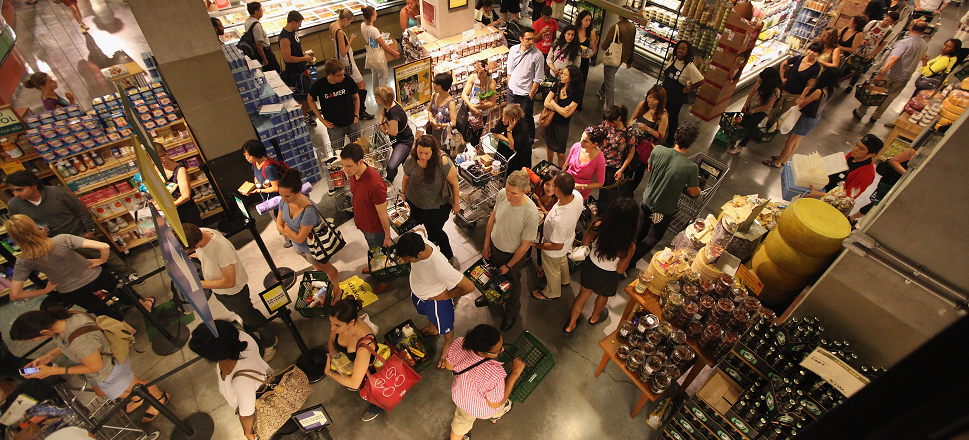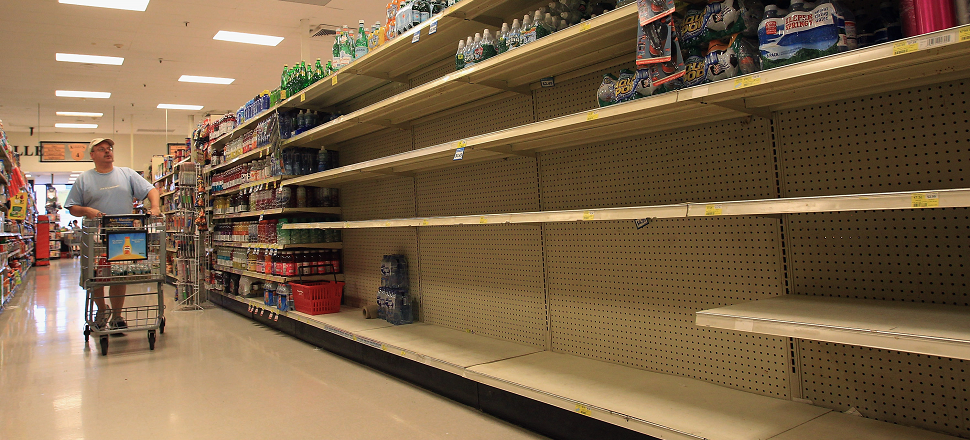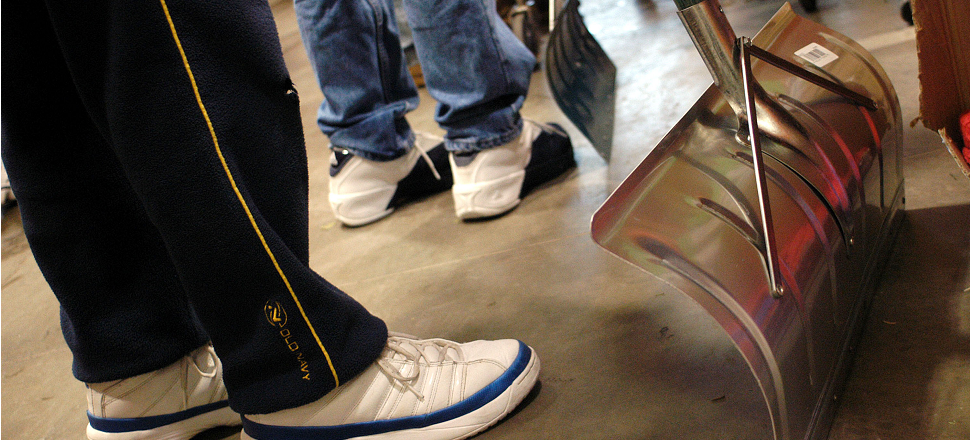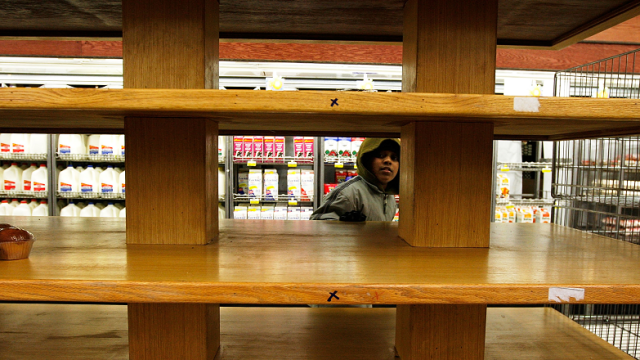When a hurricane takes aim at the coast or a blizzard looms in the forecast, something strange comes over us. We swarm into grocery stores, stripping the shelves bare of canned goods and staple foods. Lines stretch all the way around the supermarket, with people arguing and snatching food from each other’s carts.
This so-called “panic shopping” makes disasters much worse by causing short-term shortages on some items. Ironically, many of these last-minute supplies won’t even be used. So why do people continue panic shopping instead of planning ahead or just relaxing at home?

Impulses Is in Our Genes
Actually, panic shopping is a perfectly natural impulse, according to consumer psychologist Kit Yarrow, who told Gizmodo that the urge to overreact is hardwired into our genes. “Part of it is instinct,” she said.
It’s possible that early humans who stashed away food in case of trouble tended to survive more often than others. Natural selection also favoured strong reactions to signs of danger. As a result, those instincts got passed on to us, which is why we tend to want to do something when we hear that a hurricane is coming — and why that often turns out to involve a last-minute trip to the store to buy more bread than we could possibly eat before it goes bad.
That impulse can then lead to a vicious cycle; a store full of similarly panicked humans really kicks those instincts into overdrive. “There’s nothing like that kind of crowd mentality to make us irrational, so when we see that other people are responding that way, we very instinctively feel like we should, too,” explained Yarrow.
Combine that with empty shelves — which appear to confirm fears of a shortage, or even simple fear of being left out — and it’s a recipe for anxiety-fuelled buying sprees. Yarrow said, “Those empty shelves just, well, they basically make people a little bit insane, let’s just put it that way.”
“I think our natural inclination to protect ourselves in these situations gets us into the grocery store in the first place, and then what we encounter in the grocery store, crowds of people, cause us to feel a little bit of panic,” Yarrow explained. “When we feel a little bit of panic, that makes us less rational, less able to evaluate our purchasing decisions, so we’re shopping with heightened emotions. Then we get to the shelves and we see that they’re empty, and that’s what causes that sort of crowd panic reaction. It’s just sort of like this kind of snowball of situational factors that leads to the irrational purchasing.”

A Dozen for Me, None for You
And the result is that if enough people go panic shopping, they can actually create a temporary shortage — exactly the situation they were afraid of in the first place. You might walk out of the stores with a cart full of canned chilli and bottled water, but that means someone else won’t get any. Grocers in some areas have learned to expect the rush. Several supermarkets in the Midwest said they ordered extra stock and even scheduled extra staff in advance of 2014’s winter storms, but some of them ran out of staples anyway.
Some grocery stores in New York and Boston even ran out of kale in the days before Winter Storm Juno earlier this year. People must have been really desperate.
That’s usually a short-term problem here in the U.S., where roads get cleared pretty quickly even after major storms, and trucks are on the road to re-stock grocery stores right away. In the event of a longer-term problem, such as a pandemic, however, a few people’s panic shopping could cause problems for everyone else.
“The public response is not always in the best interest of the population as a whole,” Hilary Pickles, then director of public health at Hillingdon Primary Care Trust in the UK, wrote in an April 2006 article in the British Medical Journal. In fact, governments from the U.S. to New Zealand have worried for years that a major pandemic might trigger a flood of panic shopping, leading to shortages of food.

Where Do Snow Shovels Go in the Spring?
Of course, it’s not just groceries. An impending blizzard often prompts runs on ice melt, tire chains, snow shovels, and warm winter clothes. Further south, hurricane warnings send people rushing to the hardware store for flashlights, lanterns, portable grills, and plywood to board up their windows.
And some of that behaviour is a little baffling. After all, snow shovels and plywood are reusable from year to year. Even Yarrow, after years of studying consumer behaviour, doesn’t understand why so many people seem to need new snow shovels right before a forecast blizzard — especially when some of them bought shovels before last year’s big blizzard. “It’s a good question; where did all the shovels go from last year?” she asked. “It got used for the last snowman and then somebody stole it? I mean, I don’t know.”
The rush of last-minute stockpiling is really part panic and part procrastination. Winter weather shouldn’t really come as a surprise to anyone who lives in the Midwest, after all, and hurricane season shouldn’t be news to coastal residents, either.
“These seasons are usually predictable,” said Yarrow. “We know we’re going to get snowed in once or twice if we live in New York, and maybe even more. We kind of have a sense that we should be prepared for these things in advance.” She added, more bluntly, “If you’re living someplace where it snows and you don’t have a shovel already, shame on you.”

The Right Way To Prepare
The easiest way to keep yourself from panic-buying things you’ll regret later is simply to plan ahead for emergencies. If you’re relying on last-minute shopping to be ready to ride out a hurricane or blizzard, you probably aren’t prepared for the disasters we can’t yet predict, like earthquakes, tornadoes, or alien invasions.
FEMA recommends that most families keep a three-day supply of food, water, medicine, and other necessities; this should be portable, in case you need to evacuate. But you should also keep enough groceries on hand to last you a week or two at home.
That’s easier than it sounds, because you don’t have to buy everything at once. Make a list of what your family’s emergency kit needs, then pick up a couple of items each time you go grocery shopping, and you’ll have an emergency stash before you know it. That’s much easier to fit into your budget than a massive last-minute supply run, too.
According to Yarrow, a lot of last-minute panic shoppers brave the crowds just to grab a luxury item or two to tide them over — and then they get caught up in the madness. It’s easier to make sure you work some comfort foods into your emergency kit. A disaster is not the time to switch to an all-lima-bean diet (not that there’s ever a time for that). Stock your pantry with things you’ll actually want to eat if you’re stuck at home for a few days, and include a few things you can actually look forward to.
And unless you have small children or family members with special dietary needs, you might be surprised at how long you can last on what you’ve got in the pantry right now. Yarrow, who has seen the inside of a lot of pantries in her research, said “Most people can get by with what they have in their house already for three days without going to the store at all. It just means they won’t have exactly what they were hoping to have maybe that night for dinner, but I don’t see anybody starving.”
Take a look at your pantry. Is there anything in there that you feel a little sheepish about — perhaps a purchase made the last time the news predicted the Great Snowpocalypse?
“So many consumers that I do ethnography with, I explore their shelves, and I find a case of chilli beans or something in the back, and I’ll hear that they got that because they were thinking they’d make a big pot of chilli for them and their neighbours during the latest natural disaster,” said Yarrow. “That’s an actual true story.”
